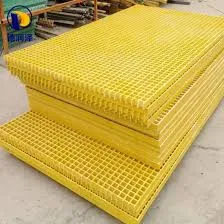
-
 Afrikaans
Afrikaans -
 Albanian
Albanian -
 Amharic
Amharic -
 Arabic
Arabic -
 Armenian
Armenian -
 Azerbaijani
Azerbaijani -
 Basque
Basque -
 Belarusian
Belarusian -
 Bengali
Bengali -
 Bosnian
Bosnian -
 Bulgarian
Bulgarian -
 Catalan
Catalan -
 Cebuano
Cebuano -
 China
China -
 China (Taiwan)
China (Taiwan) -
 Corsican
Corsican -
 Croatian
Croatian -
 Czech
Czech -
 Danish
Danish -
 Dutch
Dutch -
 English
English -
 Esperanto
Esperanto -
 Estonian
Estonian -
 Finnish
Finnish -
 French
French -
 Frisian
Frisian -
 Galician
Galician -
 Georgian
Georgian -
 German
German -
 Greek
Greek -
 Gujarati
Gujarati -
 Haitian Creole
Haitian Creole -
 hausa
hausa -
 hawaiian
hawaiian -
 Hebrew
Hebrew -
 Hindi
Hindi -
 Miao
Miao -
 Hungarian
Hungarian -
 Icelandic
Icelandic -
 igbo
igbo -
 Indonesian
Indonesian -
 irish
irish -
 Italian
Italian -
 Japanese
Japanese -
 Javanese
Javanese -
 Kannada
Kannada -
 kazakh
kazakh -
 Khmer
Khmer -
 Rwandese
Rwandese -
 Korean
Korean -
 Kurdish
Kurdish -
 Kyrgyz
Kyrgyz -
 Lao
Lao -
 Latin
Latin -
 Latvian
Latvian -
 Lithuanian
Lithuanian -
 Luxembourgish
Luxembourgish -
 Macedonian
Macedonian -
 Malgashi
Malgashi -
 Malay
Malay -
 Malayalam
Malayalam -
 Maltese
Maltese -
 Maori
Maori -
 Marathi
Marathi -
 Mongolian
Mongolian -
 Myanmar
Myanmar -
 Nepali
Nepali -
 Norwegian
Norwegian -
 Norwegian
Norwegian -
 Occitan
Occitan -
 Pashto
Pashto -
 Persian
Persian -
 Polish
Polish -
 Portuguese
Portuguese -
 Punjabi
Punjabi -
 Romanian
Romanian -
 Russian
Russian -
 Samoan
Samoan -
 Scottish Gaelic
Scottish Gaelic -
 Serbian
Serbian -
 Sesotho
Sesotho -
 Shona
Shona -
 Sindhi
Sindhi -
 Sinhala
Sinhala -
 Slovak
Slovak -
 Slovenian
Slovenian -
 Somali
Somali -
 Spanish
Spanish -
 Sundanese
Sundanese -
 Swahili
Swahili -
 Swedish
Swedish -
 Tagalog
Tagalog -
 Tajik
Tajik -
 Tamil
Tamil -
 Tatar
Tatar -
 Telugu
Telugu -
 Thai
Thai -
 Turkish
Turkish -
 Turkmen
Turkmen -
 Ukrainian
Ukrainian -
 Urdu
Urdu -
 Uighur
Uighur -
 Uzbek
Uzbek -
 Vietnamese
Vietnamese -
 Welsh
Welsh -
 Bantu
Bantu -
 Yiddish
Yiddish -
 Yoruba
Yoruba -
 Zulu
Zulu
grp car body
Exploring GRP Car Bodies Revolutionizing Automotive Design and Performance
In the ever-evolving landscape of automotive engineering, glass-reinforced plastic (GRP) car bodies have emerged as a notable innovation, combining lightweight properties with enhanced durability. This remarkable material, often referred to as fiberglass, is reshaping the way vehicles are designed and manufactured, creating new possibilities in both performance and sustainability.
.
In addition to its lightweight attributes, GRP is resistant to corrosion and weathering, ensuring longevity and lower maintenance costs. Unlike metal bodies that can succumb to rust, GRP maintains its integrity over time, even in harsh environmental conditions. This characteristic is particularly beneficial for manufacturers looking to produce vehicles that appeal to consumers in diverse climates, ensuring that a car remains aesthetically pleasing and functional throughout its lifespan.
grp car body

Moreover, the versatility of GRP allows for greater design flexibility. Manufacturers can mold this composite material into intricate shapes and sizes, enabling innovative designs that were previously challenging to achieve with traditional materials. This freedom in design can lead to more aerodynamic profiles, improved visibilities, and unique stylistic choices that enhance a car’s appeal.
Sustainability is becoming increasingly important in the automotive industry, and GRP can contribute to more eco-friendly production practices. As automotive companies strive to reduce their carbon footprint, the potential for recycling and repurposing GRP has garnered attention. Research into sustainable composites is ongoing, with possibilities for incorporating recycled materials into GRP production, further lowering the environmental impact.
As the automotive world continues to push for advancements, the integration of GRP car bodies highlights the need for innovation and adaptation in manufacturing processes. This trend reflects a broader shift towards materials that support both performance and sustainability, positioning GRP as an essential component in the future of automotive design.
In conclusion, the rise of GRP car bodies marks a pivotal shift in how vehicles are constructed and performs. By harnessing the lightweight advantages, durability, and design flexibility of GRP, manufacturers can create cars that meet the demands of modern consumers while making strides towards sustainability. As this technology develops further, it is likely that GRP will play an increasingly significant role in shaping the future of the automotive industry.









